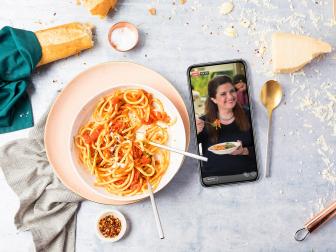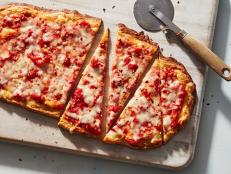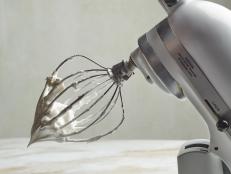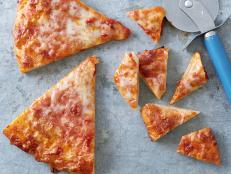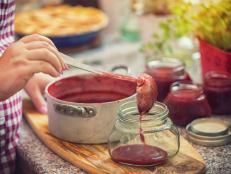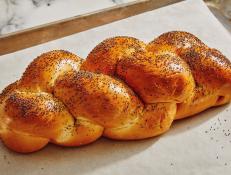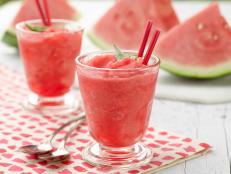4 Pizza Dough Tips That Will Make You Feel Like a Scientist
Cooking just might be the most delicious science — and we think expert baker Peter Reinhart would agree.

Manuel Sulzer/Getty
Get a Premium Subscription to the Food Network Kitchen App
Download Food Network Kitchen to sign up and get access to live and on-demand cooking classes, in-app grocery ordering, meal planning, an organized place to save all your recipes and much more.
Who would have guessed science class and making pizza dough have so much in common? With just a few simple ingredients and a little guidance from self-proclaimed “pizza freak” Peter Reinhart, you can have pizzeria-quality dough at home.
For the three-time James Beard Award-winner, there is an art to making doughs and breads. Peter has written eight (!) cookbooks on the topic. He dropped by the Food Network Kitchen to share his expertise, and teach us how to make a pizza crust and foccaccia dough. Here's a few things we learned in the class — head over to the app to learn even more!
Bring out the kitchen scale.
For any type of baking, precision with your measurements is the best way to ensure success. Peter uses a kitchen scale (not measuring cups) to weigh his ingredients, because it's more accurate. This is due to the difference between weight and volume. Weight refers to the heaviness of an ingredient, while volume refers to how much space it takes up. One cup of flour can have different ounce measurements based on how someone packs the measuring cup, but weight always remains the same.
Pro-tip: If you don't have a kitchen scale, using the "scoop and swipe" method to measure flour is the next best thing.
Reach for oil instead of flour.
Even though many pizza makers avoid using fats like oil, Peter embraces it. For a pan pizza crust or focaccia, oil is your friend! When kneading the dough, a process designed to help maximize gluten development, having the proper workspace is essential. Rather than adding flour to your surfac, Peter creates an "oil slick." Because the sticky dough won't adhere to wet surfaces, this allows him to work with the dough without the sticky mess.
Adding oil also helps to soften what Peter calls the "hard and chewy protein." This is because oil, which is a fat, serves as a tenderizer in this instance. The olive oil also adds a subtle, delicious flavor. Now that’s a win-win!
Take your time (and a couple of breaks).
Just as many science experiments require waiting, making pizza dough does too. That's because gluten takes time to work its magic. "You’re not going to get gluten development in just thirty seconds of mixing," Peter says. Gluten, a combination of two proteins, gliadin and glutenin, transforms a course mixture into a smooth dough. But you don't need to constantly mix for the gluten to develop. As the dough rests, the gluten bonds are still happening.
When kneading the dough, Peter suggests stretching and folding the dough, then taking breaks, in 3 to 5 minute intervals. This allows for the maximal ideal gluten development with the minimal amount of hands-on mixing time.
Choose time-saving yeast.
Peter uses instant yeast instead of active dry yeast for one important reason: To save time. Instant yeast dissolves the moment it's exposed to water, so you don't have to wait for the yeast to hydrate in warm water.
Peter is a fan of a slow, cold fermentation process: Once the dough is ready, he transfers it to a large bowl and covers the bowl with plastic wrap, leaving enough space for the dough to rise (it will almost double in size!). Then, the dough goes into the refrigerator for at least 12 hours, but preferably for 24. This allows for the chemical structure to change, which results in what Peter describes as a "chewy, flavorful crust," and is definitely worth the wait.
























